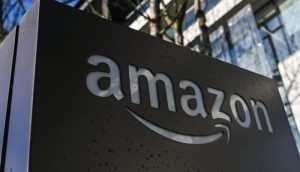Better control.
When it appointed California-based TubeMogul as its software partner in charge of video ad planning, buying and serving in North America, Mondeléz International immediately took sounder control of its online video advertising strategy, says Grant le Riche, managing director, Canada, of TubeMogul.
The deal, announced Monday, enables the Chicago-based, $35 billion company and proprietor of such popular consumer brands as Cadbury, Nabisco and Tassimo to fully utilize TubeMogul’s suite for media buying. The software suite includes Brandpoint, a tool that accurately buys digital video on a gross rating point (GRP) basis.
The programmatic buying offers Mondeléz greater accuracy and transparency when it comes to planning their online video campaigns, says le Riche.
“Without software, you pay a media vendor and you kind of hope you’re in certain sites and certain channels where you don’t really have site-by-site reporting, the ability for analytics and the frequency capping across your entire buy,” le Riche, tells MiC. “Software enables that. so Mondeléz just wanted a lot more control.”
Mondeléz obtains that control through MediaVest, the company’s North American media agency of record. Approximately 20 MediaVest team members are being trained to optimize TubeMogul’s software.
“MediaVest is creating a special programmatic team specifically for Mondeléz to handle the day-to-day trading and strategy, aligning it with the broader TV and broadcast strategy,” le Riche says.
Served media bought through premium channels like Rogers, CBC or Shaw will also be audited through the software.
“MediaVest starts getting audited reports on things like viewability, player size and where the ads are running in about 50-plus direct response metrics,” says le Riche.
“It shifts a lot more accountability over to MediaVest.”
One of the more interesting aspects of the software will be the ability of MediaVest and Mondeléz to determine why certain ads were not viewed.
“There are two reasons why an ad isn’t seen. The first one is that the viewer just doesn’t want to see your ads, but the second is typically player size, and this is the biggest red flag for not having that seen,” says le Riche.
“What we’re seeing in the market is that a large chunk of inventory is actually occurring in small banner size players, auto play, unlike what brands actually want – pre-roll players, which are typically much larger, 1000-pixels-plus players. That contributes to better viewability metrics.”
Although this project is utilizing Canada and the US as its pilot markets before globally expanding to Africa, Asia, Eastern Europe and the Middle East, le Riche maintains that the partnership between Mondeléz and TubeMogul – which had been working together for at least a year prior to Monday’s announcement – won’t be restricted to online video advertising.
“We’ll also be moving towards programmatic TV,” says le Riche.
Image of viewability reporting dashboard provided by TubeMogul



















